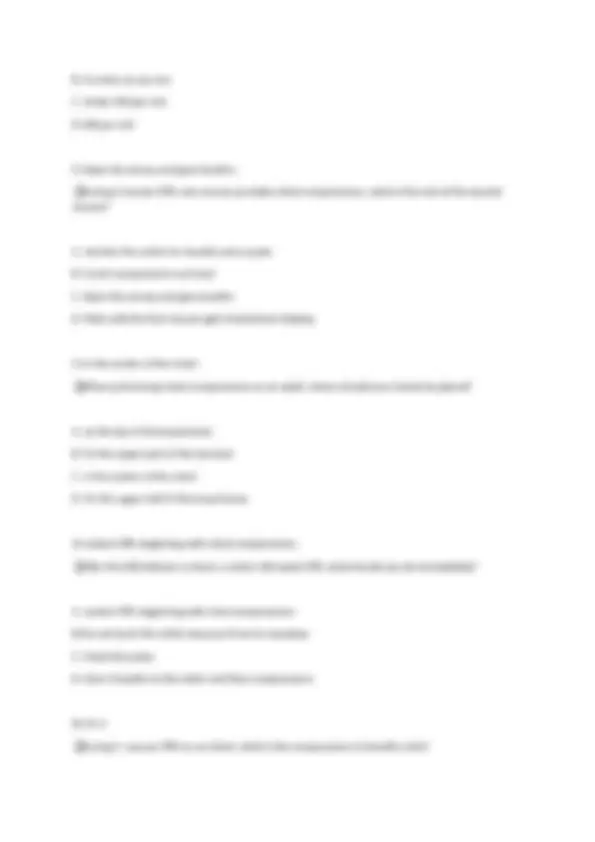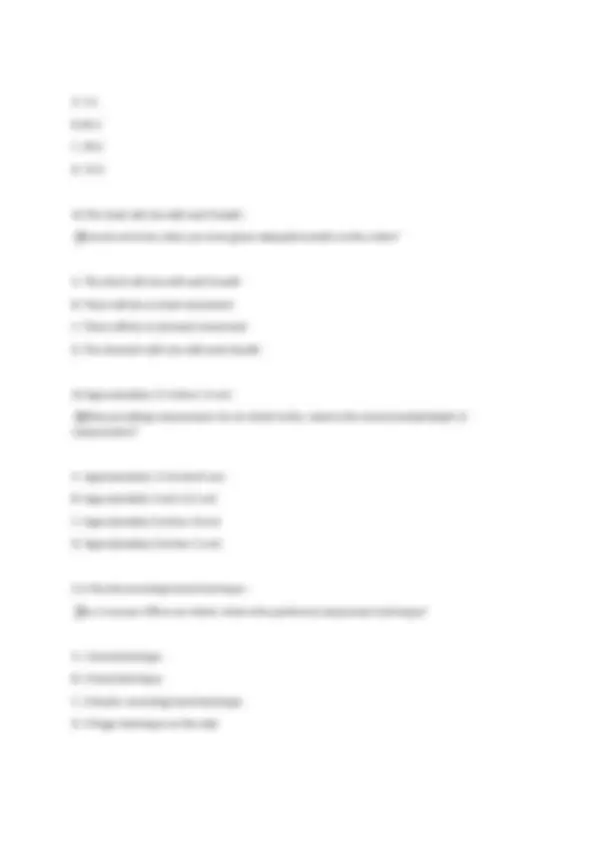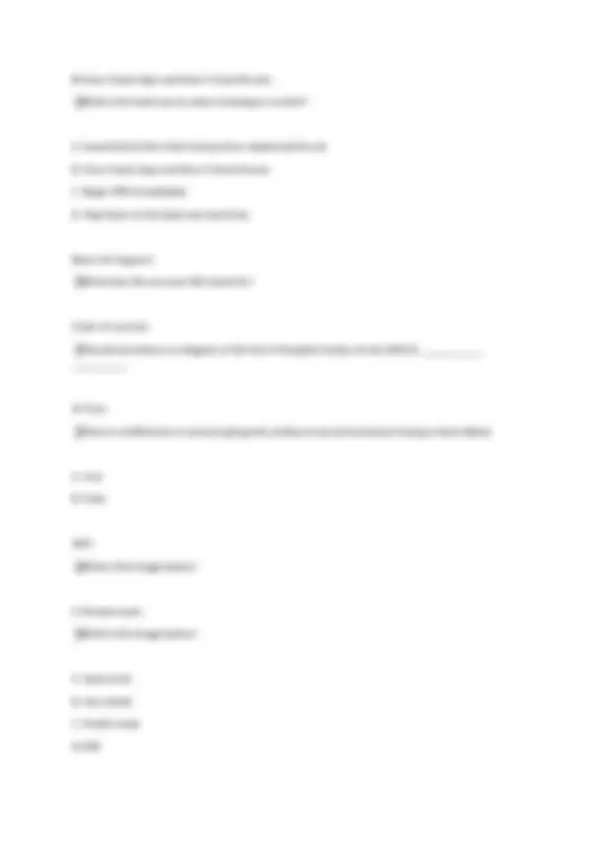





Study with the several resources on Docsity

Earn points by helping other students or get them with a premium plan


Prepare for your exams
Study with the several resources on Docsity

Earn points to download
Earn points by helping other students or get them with a premium plan
Community
Ask the community for help and clear up your study doubts
Discover the best universities in your country according to Docsity users
Free resources
Download our free guides on studying techniques, anxiety management strategies, and thesis advice from Docsity tutors
A series of questions and answers related to basic life support (bls) and cpr procedures. It covers various topics such as identifying unresponsive victims, proper airway management techniques, chest compression depth and rate, rescue breathing, and the use of aeds. The questions test the reader's knowledge on the appropriate actions to take in different emergency scenarios involving both adult and infant victims. This document could be useful for individuals preparing for a bls or cpr certification exam, as it covers the key concepts and guidelines recommended by the american heart association.
Typology: Exams
1 / 6

This page cannot be seen from the preview
Don't miss anything!




D) a victim who is unresponsive with no normal breathing and no normal pulse - ✅Which type of victim will require CPR? A. A victim that is telling you they believe they are having a heart attack B. A victim who is unresponsive but is breathing at an okay rate C. A victim with a pulse who is having trouble breathing D. A victim who is unresponsive with no normal breathing and no normal pulse A ) Use the Jaw- thrust maneuver - ✅When a victim has a suspected neck injury, what is the best way to open the airway? A. use the Jaw- Thrust maneuver B. Use the head tilt-chin lift C. Use the head tilt only D. Use the tongue lift-finger sweep D) Between 5 and 10 sec - ✅Which of the following is the correct amount of time we should check a pulse on a victim? A. 1 sec B. 3 sec C. 15 sec D. Between 5 and 10 sec B) Bag-mask device - ✅Which of the following breathing devices is not appropriate for use by a single rescuer providing breaths during CPR? A. Mouth-to-barrier device B. Bag-mask device
C. Mouth-to-mouth technique D. Mouth-to-mask technique A) At least 2 inches (5 cm) - ✅When preforming chest compression on an adult, what is the recommended depth? A. At least 2 inches ( 5 cm) B. At least 1 inch (2.5 cm) C. At least 4 inches (10 cm) D. At least 3 inches (7.5 cm) C) Give breaths without chest compressions - ✅If a child victim has a pulse of more than 60/min but is not breathing, what should you do? A. Give breaths and chest compression B. Give chest compressions without breaths C. Give breaths without chest compresions D Use an AED B) 30:1 - ✅What is the compressions to breaths ration for 1- rescuer adult CPR A. 15: B. 30: C.20: D. 5: A) Between 100 and 200 per min - ✅What is the recommended rate for preforming chest compressions for all age victims? A. Between 100 and 200 per min
A) The chest will rise with each breath - ✅How do we know when you have given adequate breaths to the victim? A. The chest will rise with each breath B. There will be no chest movement C. There will be no stomach movement D. The stomach with rise with each breath A) Approximately 1.5 inches ( 4 cm) - ✅When providing compressions for an infant victim, what is the recommended depth of compressions? A. Approximately 1.5 inches(4 cm) B. Approximately 1 inch (2.5 cm) C. Approximately 3 inches ( 8 cm) D. Approximately 2 inches ( 5 cm) C) 2 thumb-encircling hands technique - ✅For 2 rescuer CPR on an infant, what is the preferred compression technique? A. 1 hand technique B. 2 hand technique C. 2 thumb- encircling hand technique D. 2 finger technique on the side
B) Give 5 back slaps and then 5 chest thrusts - ✅What is the best way to relive chocking in a infant? A. kneel behind the infant and perform abdominal thrust B. Give 5 back slaps and then 5 chest thrusts C. Begin CPR immediately D. Slap them on the back one hard time Basic Life Support - ✅What does the acronym BLS stand for? Chain of survival - ✅The picture below is a diagram of the Out of Hospital Cardiac Arrest (OHCA) ________ ___
A) True - ✅There is a difference in somone going into cardiac arrest and someone having a heart attack. A. true B. False AED - ✅What is the image below? C) Pocket mask - ✅What is the image below? A. bask mask B. face shield C. Pocket mask D AED